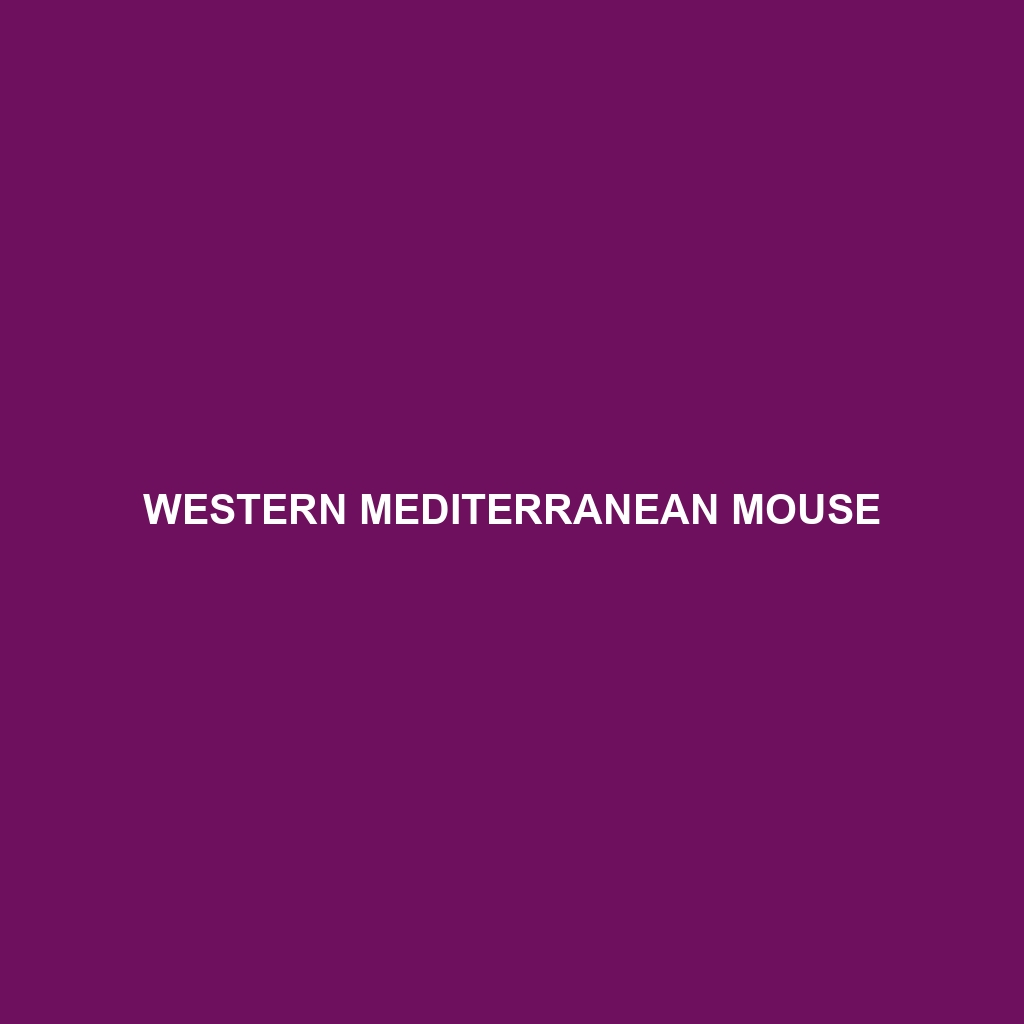Western Mediterranean Mouse (Scientific Name: )
Habitat: The Western Mediterranean Mouse is primarily found in the coastal regions of Southern Europe, particularly in the Mediterranean Basin. Its habitat includes scrublands, grasslands, and agricultural areas where it thrives in warm temperate climates. The mouse favors areas with dense vegetation for cover and foraging, often inhabiting regions scattered across countries such as Spain, Italy, and France.
Physical Characteristics: This species typically measures between 7 to 10 centimeters in body length, with a tail approximately the same length as its body. The Western Mediterranean Mouse displays a soft, fine fur that is generally brown to gray on the dorsal side with lighter shades on the belly; this coloration helps it blend into its surroundings. Distinctive features include a slightly pointed snout and large round ears, which enhance its hearing ability.
Behavior: The Western Mediterranean Mouse is primarily nocturnal, exhibiting active behaviors during the night. It is known for its agile movements and ability to scurry quickly, which helps it evade predators. Socially, these mice are often found in small groups, and they communicate through a range of sounds and body language. They are also territorial, marking their habitat with scent to ward off intruders.
Diet: This mouse is an omnivore, feasting on various plant materials, seeds, fruits, and occasionally insects. The Western Mediterranean Mouse plays a crucial role in seed dispersal within its habitat, making it an important species for maintaining the ecological balance. Its feeding habits are pivotal, as it helps to control vegetation growth and supports the regeneration of certain plant species.
Reproduction: Reproductive habits of the Western Mediterranean Mouse are marked by multiple breeding seasons throughout the year, largely influenced by environmental conditions. Females typically give birth to 3-8 offspring after a gestation period of about 21 days. Young mice are altricial (born undeveloped) and require maternal care until they are weaned at about three weeks of age. The nurturing behavior of mothers is quite remarkable, providing a safe environment for their young.
Conservation Status: As of now, the Western Mediterranean Mouse is classified as “Least Concern” by the IUCN, indicating that it is not currently facing any immediate threats. However, habitat loss due to agricultural expansion and urbanization poses potential risks that could affect its populations in the future.
Interesting Facts: The Western Mediterranean Mouse is not only noteworthy for its adaptability to various habitats but also for its role in local folklore. These mice are considered symbols of survival in harsh environmental conditions, illustrating their resilience.
Role in Ecosystem: The Western Mediterranean Mouse plays an essential role in its ecosystem as a prey species for numerous predators, including birds of prey and small mammals. Moreover, through their feeding and burrowing habits, they contribute significantly to soil aeration and nutrient cycling, thereby supporting the overall health of their environments.
